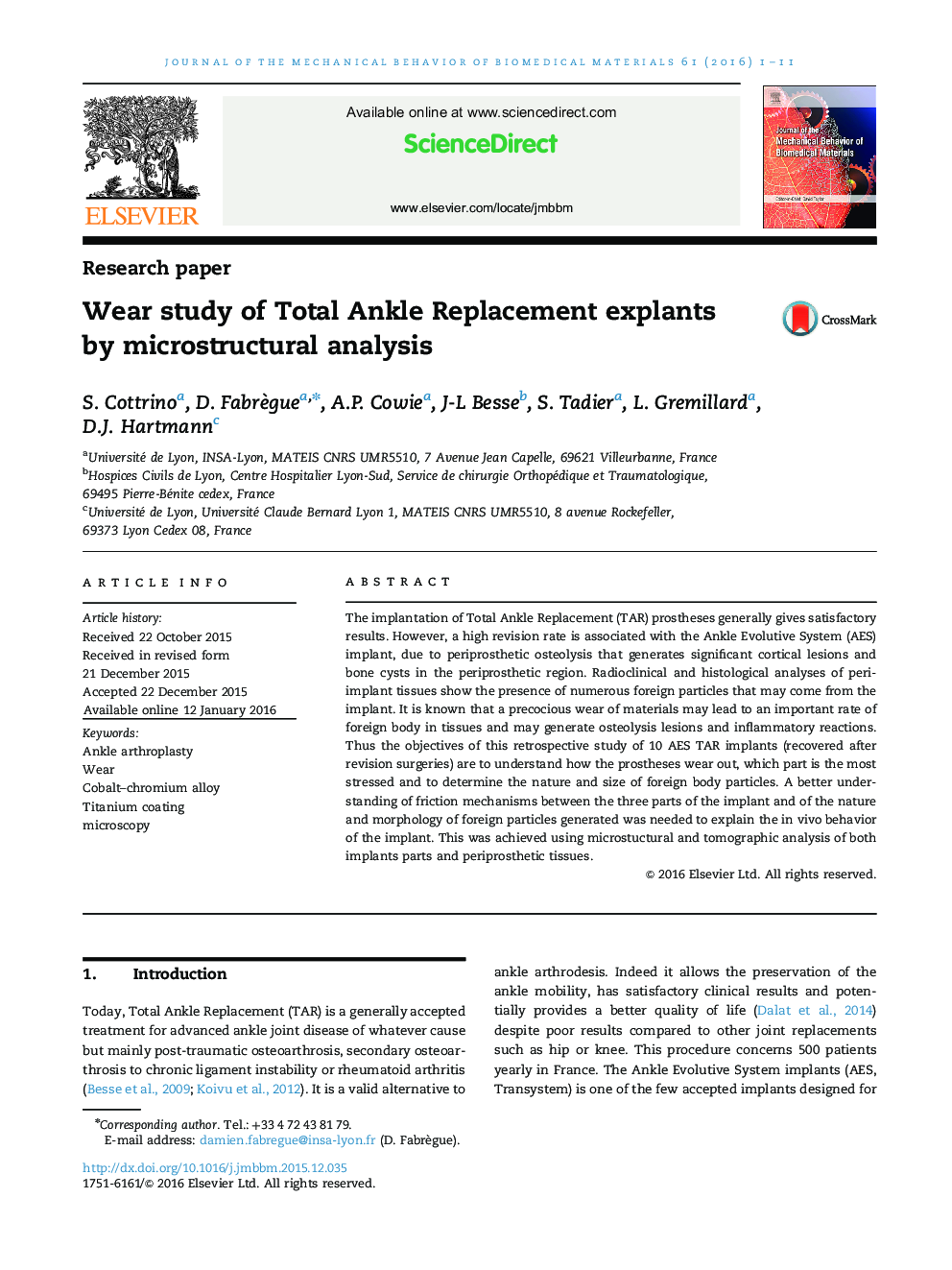| Article ID | Journal | Published Year | Pages | File Type |
|---|---|---|---|---|
| 7207860 | Journal of the Mechanical Behavior of Biomedical Materials | 2016 | 11 Pages |
Abstract
The implantation of Total Ankle Replacement (TAR) prostheses generally gives satisfactory results. However, a high revision rate is associated with the Ankle Evolutive System (AES) implant, due to periprosthetic osteolysis that generates significant cortical lesions and bone cysts in the periprosthetic region. Radioclinical and histological analyses of peri-implant tissues show the presence of numerous foreign particles that may come from the implant. It is known that a precocious wear of materials may lead to an important rate of foreign body in tissues and may generate osteolysis lesions and inflammatory reactions. Thus the objectives of this retrospective study of 10 AES TAR implants (recovered after revision surgeries) are to understand how the prostheses wear out, which part is the most stressed and to determine the nature and size of foreign body particles. A better understanding of friction mechanisms between the three parts of the implant and of the nature and morphology of foreign particles generated was needed to explain the in vivo behavior of the implant. This was achieved using microstuctural and tomographic analysis of both implants parts and periprosthetic tissues.
Related Topics
Physical Sciences and Engineering
Engineering
Biomedical Engineering
Authors
S. Cottrino, D. Fabrègue, A.P. Cowie, J-L Besse, S. Tadier, L. Gremillard, D.J. Hartmann,
